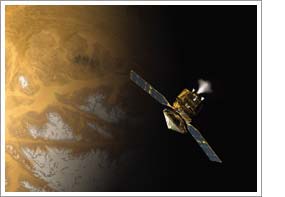
 |
Flying the Friendly SkiesThe U.S. aeronautics industry is one of the largest contributors to the nation’s balance of trade. For example, in the next 24 hours a single company in the industry (Boeing) will export $53 million of goods and services and transport more than 3 million passengers around the world.President George Bush wants the National Aeronautics and Space
Administration (NASA) to return to the moon, build a permanent base
there, and then begin steps to develop and launch a manned mission
to Mars. NASA is also committed to flying the space shuttle through
2010, completing the international space station, and having a new
space vehicle ready for flight by 2014. According to Thomas
C. Corke, the
Clark Equipment Professor of Aerospace and Mechanical Engineering
and Director of the Center
for Flow Physics and Control and the Hessert
Laboratory for Aerospace Research, that is quite a challenge
considering that NASA’s aeronautics budget
began to drop substantially two years ago. The Bush administration’s
proposed 2007 budget would cut funding by another 18 percent, down
more than $1 billion from 2004. Corke predicts that the cuts will
not only affect the aviation industry and universities, who receive
funding for aeronautics research, but it will also impact the nation’s
status as an aviation leader and hurt the economy. “Aeronautics
is the largest exporter in the country,” he said. “The
total deficit due to exports in 2005 would have been 50 percent higher
if it were not for the aircraft industry. Today, countries such as
Japan and China are challenging America’s role as the global
leader in aviation.”
|
